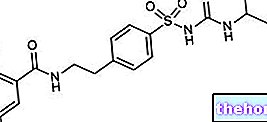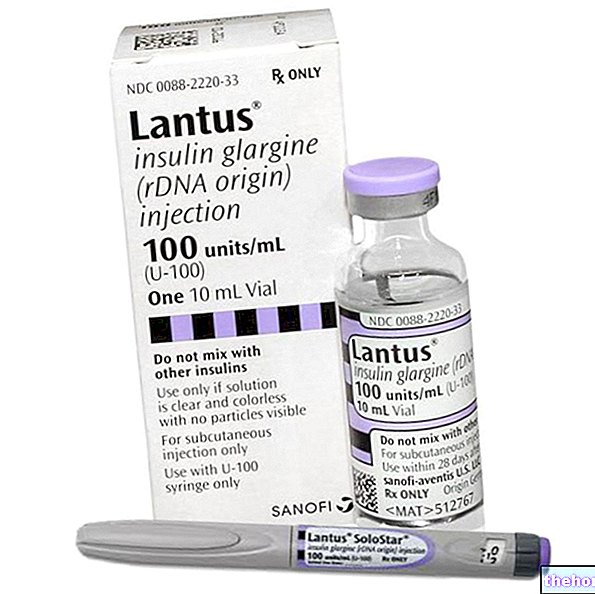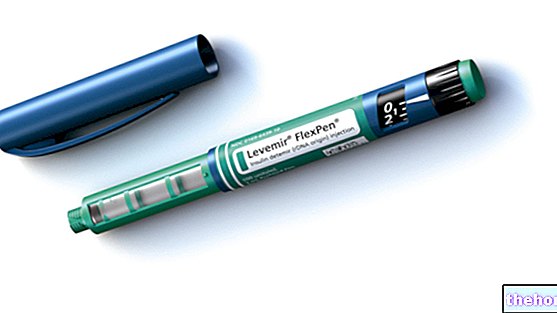
Empagliflozin can be used either as monotherapy or in combination therapy with other oral antidiabetic drugs, or with insulin.
Medicines based on empagliflozin can only be dispensed on presentation of a limited repeatable medical prescription (RRL - drugs that can be sold to the public only on prescription from hospitals or specialists). However, as they are classified as class A drugs, their cost can be reimbursed by the National Health System (NHS).
Examples of Medicines containing Empagliflozin
- Jardiance®
- Synjardy® (in combination with metformin)
- Glyxamby® (in combination with linagliptin)
Note: in this article we will consider indications, warnings, interactions, side effects, use in pregnancy and during lactation and contraindications of empagliflozin alone and not of empagliflozin in combination with other antidiabetics.
type 2 mellitus in patients in whom interventions on diet, exercise and possibly body weight are not sufficient to control the disease.
Empagliflozin can be used either alone - in patients who cannot take metformin - or in combination therapy with other oral antidiabetic drugs or with insulin.
Please Note
Dietary treatment and physical activity must NOT be interrupted even when you are taking antidiabetic drugs. In fact, the latter must be combined with a normoglycemic diet and regular exercise and not be used as an alternative to them.
;- Nausea and / or vomiting;
- Stomach pain
- Excessive thirst
- Fast and deep breathing;
- Confusional state;
- Unusual sleepiness and fatigue
- Sweet smell of breath;
- Perception of a metallic or sweet taste in the mouth
- Change in the smell of sweat or urine.
- Vomiting, diarrhea, fever, or inability to eat and drink
- Therapy with diuretics or antihypertensives;
- Over 75 years of age.
In any case, before starting treatment with empagliflozin, it is necessary to inform your doctor of your health conditions, making him aware of the possible presence of ailments or diseases of any kind, even if not mentioned in the above list.
Please Note
- The use of empagliflozin in children and adolescents less than 18 years of age is not recommended.
- Due to the mechanism of action with which empagliflozin acts (see dedicated chapter), the urine of patients treated with the active ingredient will be positive for sugars.
- When empagliflozin is used in combination with other antidiabetic medicines, there is an increased risk of developing hypoglycaemia, the symptoms of which may affect the ability to drive and use machines.
In any case, before starting empagliflozin therapy, you should tell your doctor if you are taking, or have recently been taking, any medications or products of any kind - even if not listed above - including medicines without prescription (SOP), over-the-counter drugs (OTC), herbal and phytotherapeutic products and homeopathic products.
experiencing undesirable effects that differ in type and intensity, or not showing them at all.
In particular, it is necessary to contact your doctor immediately or go to the nearest hospital in case of:
- Severe allergic reactions which can occur with angioedema, difficulty in breathing and difficulty in swallowing.
- Diabetic ketoacidosis whose symptoms are listed in the "Warnings and Precautions" chapter.
Note: The risk of developing diabetic ketoacidosis may increase with prolonged fasting, excessive alcohol consumption, dehydration, sudden reduction in insulin dose, or an increased need for insulin that may occur following major surgery or illness. severe.
- Hypoglycaemia (frequency very common, especially when empagliflozin is given in combination with other antidiabetic medicines, including insulin) which can occur with symptoms such as:
- Tremor;
- Sweating;
- Anxiety or confusion
- Tachycardia;
- Excessive hunger;
- Headache.
Note: Hypoglycaemia should be treated promptly by taking sugar or sugary drinks. If severe hypoglycaemic symptoms occur, hospitalization is required.
- Kidney and / or urinary tract infections whose symptoms may consist of:
- Burning when passing urine;
- Cloudy urine
- Pain in the pelvis or pain localized in the middle of the back (in case of kidney infection).
- Dehydration which can manifest itself as unusual thirst, dizziness, fainting, loss of consciousness.
Common side effects
Common side effects that may occur during empagliflozin therapy include:
- Candidiasis;
- Increased frequency of urination and / or increased volume of urine excreted;
- Thirst;
- Itching;
- Rashes, redness of the skin, bumps, blisters and sweating
- Increase in blood cholesterol levels.
Uncommon side effects
Among the uncommon side effects that can occur during therapy with empagliflozin, however, we find:
- Difficulty emptying the bladder with or without pain
- Urticaria;
- Decreased kidney function visible in blood tests
- Increase in the number of red blood cells.
Overdose
In case of empagliflozin overdose it is necessary to contact your doctor or go to the nearest emergency room, taking care to take the package of the medicine taken with you.
- type 2 glucose (SGLT-2) localized in the kidney.SGLT-2 is primarily responsible for the reabsorption of filtered glucose from the tubular lumen. Patients with type 2 diabetes have a high reabsorption of glucose in the kidneys and this can contribute to the maintenance of high blood glucose levels. By inhibiting this transporter, empagliflozin reduces the reabsorption of glucose, favoring its excretion instead. This is why patients on empagliflozin test positive for urine sugars.
. The active ingredient can be taken at any time of the day, but preferably at the same time each day.
The usual starting dose is 10 mg empagliflozin once daily. Later, if deemed necessary, the doctor may increase the dose of active ingredient administered up to 25 mg per day.
Forgetfulness of a dose
If you forget to take a dose of empagliflozin, you can do the following:
- If the forgotten dose is noticed when the next dose is 12 hours or more, empagliflozin should be taken as soon as possible. After that, the next dose should be taken at the usual scheduled time.
- If, on the other hand, you find that you have forgotten to take the active ingredient when the next dose is less than 12 hours away, the missed dose should be skipped. The next dose should be taken at the usual scheduled time.
A double dose of empagliflozin should not be taken to make up for a forgotten dose.
.



























